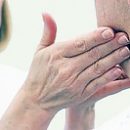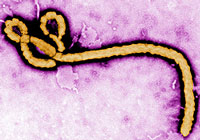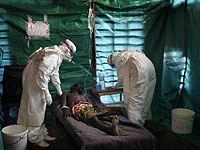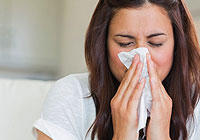Ebola fever, fever Marburg, Yellow fever - Hemorrhagic feverous many. What you need to know about the disease to stay healthy?
Content
Dangerous fever
Hemorrhagic fevers caused by Marburg and Ebola viruses have a lot in common, since their pathogens are applied to the articles and between them there are only minor antigenic differences. The disease caused by these viruses is distinguished by high infinity, severe flow and almost 100% mortality, therefore refers to particularly dangerous infections.
The first outbreak of the disease was registered in the German city of Marburg in 1967. In the future, such cases were observed in Zaire (near the Ebola River, also given one of the infection names), as well as in South Africa, Sudan, Kenya, Cat’Ivoire.
What causes fever
The pathogens of these fevers are RNA-containing finnishing, significantly different from all known viruses on ultrastructure and antigen. In the blood, virus particles can be detected up to 12 weeks after the introduction. Characterized by the spread of the pathogen throughout the body with blood flow.
The source of infection and the virus reservoir in nature during all registered flares were African green monkey (Cercopitacus Aethiops). The participation of other animals in natural foci has not been studied. Infection occurs when in contact with an infected primacy (during the hunt, when cutting out the carcass).
The sick person represents the danger to others - the selection of the virus occurs with the nasal mucus, urine. Blood also, which is especially relevant for medical workers.
These viruses are considered as biological weapons, in addition, on their base, it is possible to create other, more powerful pathogens, which can also be used for bioterrorist purposes.
The incubation period (the period from the attitent hit the body to the first manifestations of the disease) ranges from 2 to 16 days.
How fever appear
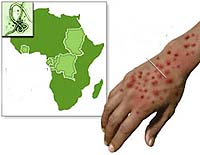 The manifestation of fevers caused by Marburg and Ebola viruses is not different. The disease begins sharply, with a rapid increase in body temperature up to 39-40°S, often with chills. From the first days, signs of general intoxication are developing: headache, weakness, drierness, muscle and articular pain.
The manifestation of fevers caused by Marburg and Ebola viruses is not different. The disease begins sharply, with a rapid increase in body temperature up to 39-40°S, often with chills. From the first days, signs of general intoxication are developing: headache, weakness, drierness, muscle and articular pain.
A few days later they join the lesions of the gastrointestinal tract in the form of diarrhea, hemorrhagic syndrome with bleeding of various localization and intensity. Dehydration is gradually developing, a consciousness may be impaired.
Half patients in the first week of the disease appears a corppy rash, exciting face, palm and soles. Occasionally observed skin itching.
In severe cases, death can occur in the period from the 4th to the 27th day (most often on the 10th). The period of recovery is very long, with preservation of asthenization, head and muscular pain, unpleasant feelings in the throat, possibly hair loss.
How to recognize the disease
Diagnosis is difficult. Multiple moments must be taken into account: the path of infection - whether a person was in places where it is possible to infect fever, the diseases of the disease (characteristic of fever features) and laboratory data (detection of the pathogen in the blood). Special studies are held to detect the virus directly - only after that the final diagnosis can be set.
Treatment of diseased
Treatment of patients is carried out in special premises with strict observance of all precautions, with insulation of patients and conducting preventive measures among contact persons. Therapy comes down to maintaining vital functions, as well as eliminating the symptoms of the disease - is mainly the fight against intoxication (headache, weakness. Nausea, pain in joints and muscles), temperature rise, dehydration and hemorrhagic syndrome (hemorrhages and bleeding).


